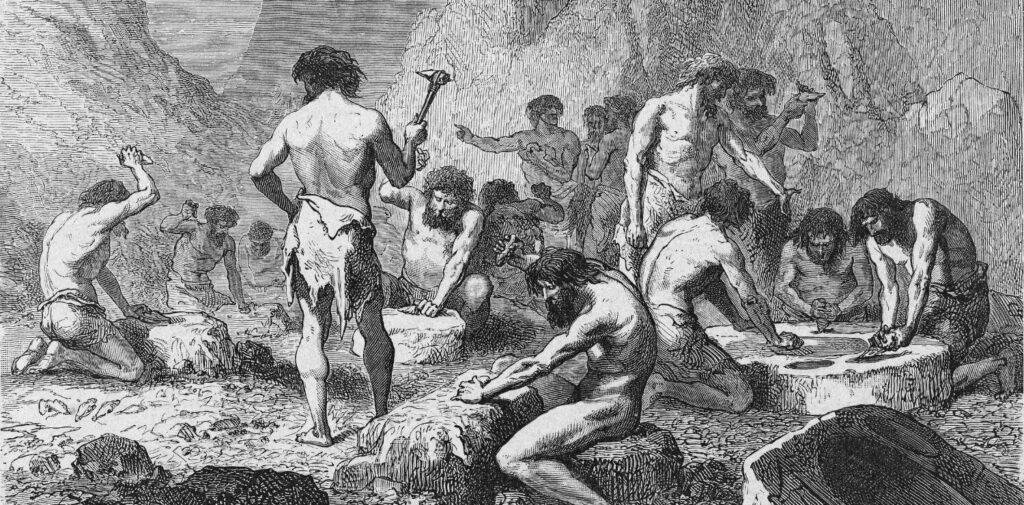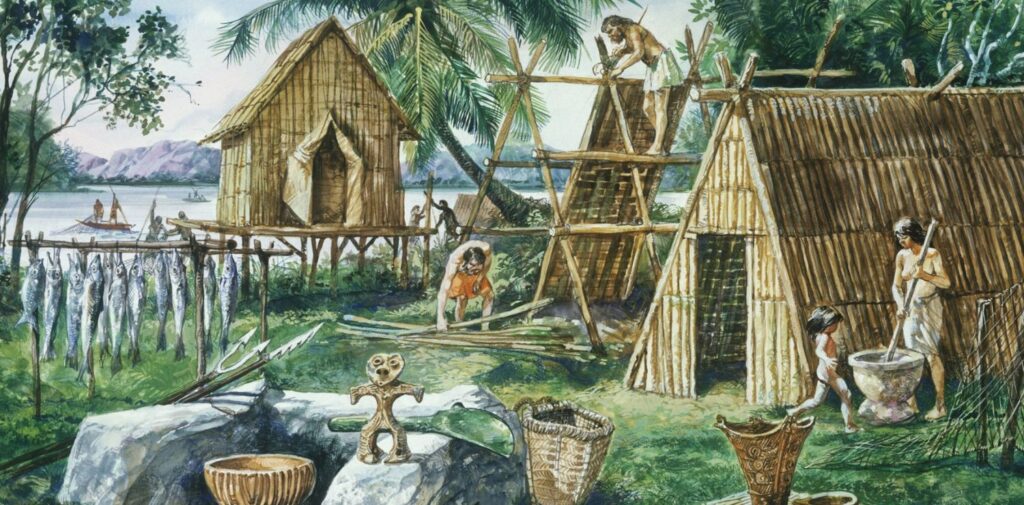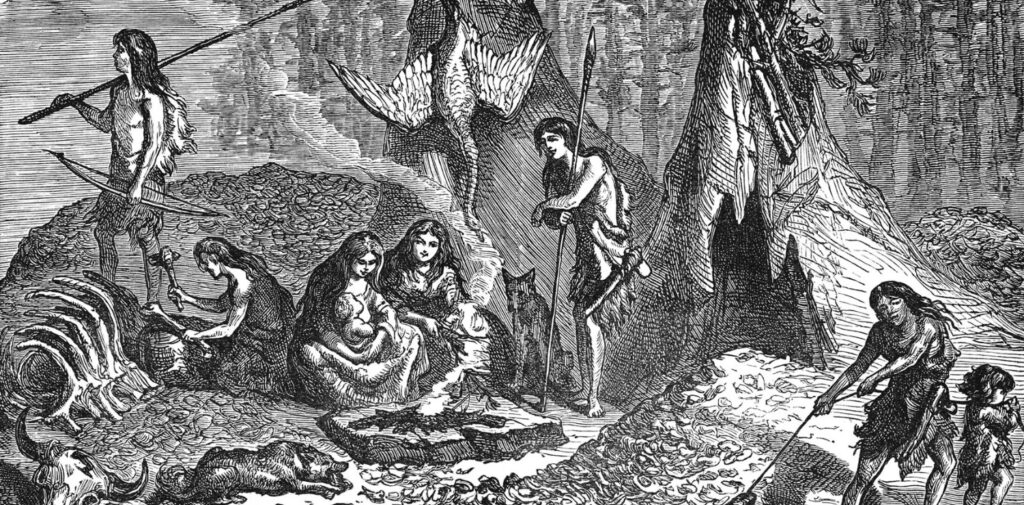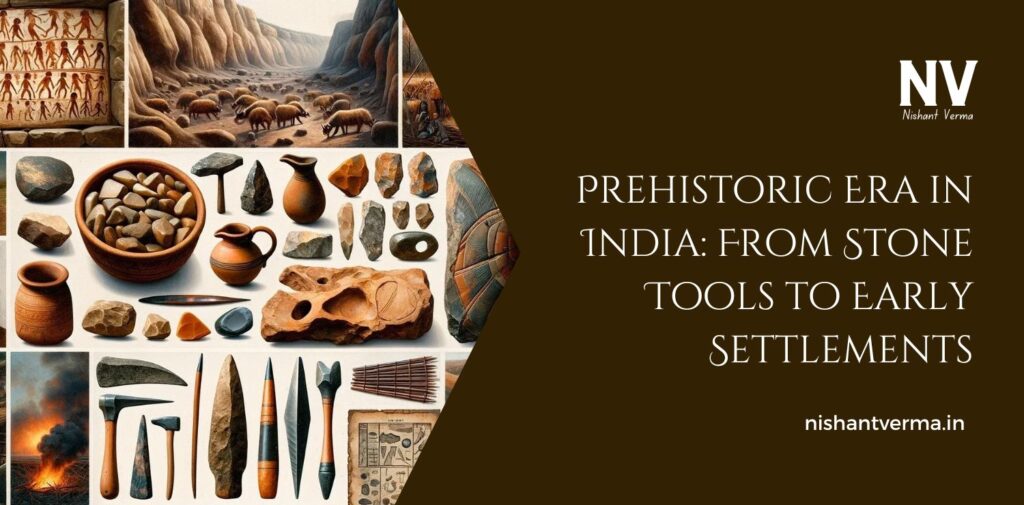The history of India is rich and fascinating, and it goes back thousands of years before recorded history. To understand the earliest days of Indian civilization, we need to look at the Prehistoric Era, which means the time before people started writing things down. This era is a part of India’s ancient history that includes the time when humans first appeared and began to make tools, hunt animals, and live in communities.
In this article, we will explore the journey of humans in India, from using simple stone tools to building early villages.
What is the Prehistoric Era?
The Prehistoric Era refers to the time in history when people did not have written records. The first humans lived in caves, made tools from stones, and hunted animals for food. This era began millions of years ago and lasted until humans developed the ability to write.
India’s prehistoric past can be divided into three main periods: The Paleolithic Age (Old Stone Age), The Mesolithic Age (Middle Stone Age), and The Neolithic Age (New Stone Age).

The Paleolithic Age (Old Stone Age)
This is the earliest period of human history, stretching back to around 2.5 million years ago. During this time, humans were hunter-gatherers, meaning they hunted wild animals and gathered fruits, seeds, and other plants for food.
What did people do during this time?
- Stone Tools: The people of the Paleolithic Age made tools from stones, which were simple and rough. These tools were used for cutting, hunting, and scraping. Some of the most famous tools from this period are hand axes, cleavers, and scrapers.
- Living in Caves: Early humans lived in caves and open shelters. The caves provided safety and protection from the weather and animals. Some famous cave paintings have been found in places like Bhimbetka (in Madhya Pradesh), which show that early humans also had artistic skills.
- Fire: Early humans learned how to make fire. They used it for warmth, cooking, and protection from animals.
The Paleolithic people were spread across the land, and their tools and signs of living have been found in many parts of India, such as Tamil Nadu, Madhya Pradesh, and Uttar Pradesh.
The Mesolithic Age (Middle Stone Age)
The Mesolithic Age lasted from around 10,000 BCE to 5,000 BCE. This period marks a time when humans began to adapt to changing environments and the world around them.
What changed during the Mesolithic Age?
- Smaller Tools: The tools in the Mesolithic Age became smaller and more refined. These tools were made of microliths (small stone blades), which could be attached to wooden handles to make spears and arrows. This allowed people to hunt more efficiently.
- Fishing and Hunting: People still hunted animals, but they also started fishing and gathering other foods from rivers and lakes. They lived near water sources to make hunting and fishing easier.
- More Permanent Settlements: During the Mesolithic period, humans began to stay in one place for longer periods of time. They built temporary shelters and began forming small communities.
The Mesolithic period shows the growth of early human skills in hunting, fishing, and living in groups. Tools from this time have been found in places like Bagor in Rajasthan and Tilwara in Madhya Pradesh.

The Neolithic Age (New Stone Age)
The Neolithic Age began around 5,000 BCE and lasted until the beginning of the Bronze Age. This was a big turning point in human history because people began to settle down and develop farming.
What changed during the Neolithic Age?
- Farming: One of the most important changes in the Neolithic Age was the invention of farming. Humans began to grow crops like wheat, barley, and rice. They also started domesticating animals like goats, sheep, and cattle. This allowed them to stop moving around constantly in search of food.
- Permanent Settlements: With farming, people no longer needed to live in caves or temporary shelters. They started building permanent homes and small villages. These villages were often near rivers to provide water for farming.
- Tools and Pottery: People began making more advanced tools, such as sickles for cutting crops and grinding stones for making flour. They also created pottery to store food and water.
- The Discovery of Metalworking: Towards the end of the Neolithic period, people began to experiment with metals, such as copper. This marked the beginning of the Bronze Age.
Some of the most famous sites of the Neolithic Age in India are Mehrgarh (in modern-day Pakistan) and Burzahom (in Kashmir). These sites show the early development of farming, pottery, and permanent settlements.
Early Settlements and the First Villages
As time passed, the early humans in India started forming more complex communities. By the end of the Neolithic period, some of these communities had developed into small villages. These villages were the beginning of organized human society.
What did these early villages look like?
- Mud Houses: The people in these villages built houses using mud and thatch. These homes were simple but sturdy, and they provided a safe place to live.
- Farming Tools: People used advanced tools to plow the land and harvest crops. They began to grow food in large quantities, which allowed them to feed more people.
- Social Life: In these early villages, people started to work together in groups. They helped each other with farming, building, and other tasks. These communities were the first steps toward the growth of towns and cities.
The discovery of early settlements is important because it shows how humans moved from being wanderers to building permanent homes and creating the first forms of society.

How Do We Know About the Prehistoric Era?
Since there were no written records during the prehistoric era, we learn about this time through archaeological discoveries. Archaeologists dig up ancient tools, bones, and other objects that help us understand how early humans lived. Some of the most important archaeological sites in India, like Bhimbetka caves, Mehrgarh, and Harappa, give us a glimpse into the lives of people during these early periods.
Conclusion: The Beginning of Human History in India
The Prehistoric Era in India was a time of change and development. It started with the simple tools of the Paleolithic Age, moved into more advanced hunting and fishing during the Mesolithic Age, and then saw the rise of farming and permanent settlements in the Neolithic Age. These early humans laid the foundation for the future civilizations that would follow.
By studying these early periods, we learn about the beginning of human society in India and how people learned to adapt to their surroundings. The story of the Prehistoric Era is an important chapter in the long and rich history of India.
Understanding this time helps us appreciate how far we have come—from simple stone tools to the development of complex societies.




